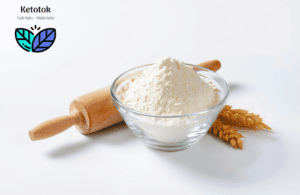Intermittent fasting is considered a complex, yet effective way of losing weight in an efficient manner that is not damaging to your body. With the help of keto diet principles, prolonged fasting for long hours as much as a 48-hour fast or even a 72-hour fast can be used to get into a state of ketosis. In this article, we take you through ketogenic diet approaches to losing weight, in which intermittent fasting for longer hours puts you in a state of ketosis, and why it must be done
Introduction to Fasting and Ketosis
Brief Explanation of Fasting and Ketosis
- Ketosis: It is a type of dietary restriction. The National Health Institute defines keto to be a diet that is high in fat and low in carbohydrates. With high fat and low carb, the body is forced to break down existing fat molecules for energy, rather than on the sugars and glucose being ingested from carbohydrates.
- Fasting: To induce ketosis, intermittent fasting is conducted, in which long hours of eating is switched for fasting goals. On a regular schedule, it involves switching between fasting and eating. The sort of fasting that will be done is either water fast, which allows for water consumption during fasting stages or you can follow the rules of a dry fast, with no water or food of any kind.
Importance of Ketosis for Weight Loss and Health
To get into ketosis, you must first understand why it is important. Prolonged fasting may feel daunting, but it holds great benefits for your health. The process of a ketogenic diet can make you feel less hungry because you keep eating but with less consumption of food. It holds benefits because of its effects on reduction of appetite without feeling too hungry.
Apart from this, ketone-oriented diet restrictions have metabolic effects in that it boosts the metabolism to break down stored energy, rather than breaking down carbohydrates that have been ingested.
Understanding the Different Fasting Durations
Comparison between 48-Hour and 72-Hour Fasts
With intermittent fasting, the objective is to enter ketosis with the help of prolonged fasting or restriction of food and water. This state of ketosis is meant to initiate glucose from stored sources, rather than glycogen from carbohydrates being ingested. Therefore, the straight answer is that the longer the fast, the greater will be the benefits of ketone fasting.
However, there are certain benefits of a 48-hour fast as well. For instance, metabolic effects of both 48 and 72 hours remain the same, so lesser time with intermittent fasting can result in the same end result. However, hours of fasting at 72 hours also result in greater burning of body without food consumption.
Benefits and Considerations of Each Duration
- Benefits
48 hour: Lesser time of intermittent fasting with the same benefits of body fat burning and a decrease in insulin levels as well.
72 hour: More production of stem cells, immune cells and a reduction in oxidative stress that also reduces inflammation throughout the body
- Considerations
48 hour: Benefits are present, but less than the 72 hour fast. In case you have comorbidities, then fasting is more damaging than beneficial
72 hour: initially, dizziness and hunger will be too much to handle and can result in demotivation or even unhealthy eating habits.
How to Get Into Ketosis Faster
Strategies to Expedite the Process of Entering Ketosis
We know ketosis and intermittent fasting can be a strenuous and daunting process to think of. How does one not eat food voluntarily for 48 and 72 hour periods or even longer? Well here are a few ways you can expedite your process to enter ketosis and read the goals of a greater fasting period.
- Instead of forcing yourself to fast for 48 hours the very first time, build your habit. Begin by living without food for 16 hours, 8 hours or even less
- Before fasting, eat a healthy and filling meal. Eat olive oil, fruits, flaxseed, nuts, and fish as sources of energy and autophagy will ensure the breakdown of stored glucose in the body
- Apart from energy sources, checking for ketone levels is also important and can help you keep track of your health. Ketone levels in the urine, breath, and blood are ways of knowing if you are successfully reaching a metabolic state of ketosis
Importance of Low-Carb, High-Fat Diet for Ketosis
A diet of low-carb is critical in dieting to reduce weight because it helps in automatically reducing your appetite. To deplete body fat and glycogen stores, low-carb is essential in burning fat and without the added weight of feeling hungry
For people with type 2 diabetes, intermittent fasting can is not recommended, although a low-carb and high-fat diet can support the digestive system, and reduce inflammation and oxidative stress as well.
The Science Behind Fasting and Ketosis
Explanation of the Metabolic Shift during Fasting
Once you start fasting, medical advice is that body faces a metabolic switch which is essential in causing loss of body weight. The liver looks for glucose levels, but upon a low-carb diet, it transitions into producing glucose from glycogen stores already present. As sugar levels rise and insulin is replenished, it leads to a reduction in body fat. People with insulin sensitivity however have to seek medical advice before taking any such steps
Role of Ketones and Fat Burning in Ketosis
Simply put, ketone is a source of energy for the body. Under normal circumstances, the source of energy is glucose levels, but upon low glucose from low carbs, the body creates ketone. Its chemical structure is that of a fat molecule and it takes to get higher ketone levels to reduce fat levels. As soon as you break your fast, the glucose levels rise and your metabolism goes back to normal. Similarly, with extended fasting or longer fasting hours, greater ketone is produced and stored body fat is reduced.
The Stages of Fasting and Their Effects on Ketosis
Overview of the Stages of Fasting and Their Impact on Ketosis
- 12 hours: ketosis is reached and body fat is broken down.
- 18 hours: a significant rise in ketones.
- 24-hours: cells begin to break down old proteins to make room for energy molecules.
- 48-hours: growth hormones level significantly rise.
- 54-hours: insulin levels are low and the body is at risk of becoming insulin sensitive.
- 72 hours: ketone levels are the highest.
Description of Each Stage and Its Benefits
- 12-hours: [Initial] ketone molecules, acetoacetate, and beta-hydroxybutyrate are being produced
- 18-hours: ketone levels under normal circumstances are at 0.05-0.1 miliMolar, but under intermittent fasting, it can rise to 5-7 miliMolar
- 24-hours: AMPK signaling pathway is activated, leading to depletion of glycogen stores and insulin levels begin to drop
- 48-hours: ghrelin hormone promotes growth and preserves lean mass
- 54-hours: insulin levels are on the decline, which activates autophagy
- 72-hours: [Final] The body begins to breakdown immune cells and generates new ones
Tips For A Successful 48-Hour Fast
Preparation before Starting the Fast
To prepare for the fasting period, it is important to intake a healthy filling meal. Fasting can also include no food and water, so lots of liquid and solid food
Hydration and Electrolyte Balance during the Fast
To stay in a state of ketosis, no food is allowed. However, you can drink zero-calorie drinks to keep yourself hydrated. Let’s take the example of energy drinks, as long as they have zero calories, you can drink them and it is much better if you do drink them
Breaking the Fast Safely and Maintaining Ketosis
At this stage, steps to induce ketosis have been taken, but healthy decisions must be made to break the fast that maintains a state of ketosis for as long as possible. Therefore, fast only once a month to induce ketosis. To stay in ketosis, break your fast with high-energy fruits, nuts, and solid food, but do not overstimulate your gut
How Long Does It Take To Get Into Ketosis?
Factors Influencing the Time It Takes to Enter Ketosis
These factors significantly affect ketosis:
- Smaller age can result in delayed ketosis
- High or low metabolism rate
- The extent of exercise done during intermittent fasting
- Carbohydrate, protein, and fat intake prior to fasting
Average Timeframe for Achieving Ketosis through Fasting
The average time is 2-4 days, with the lowest point to reach ketosis being 2 days, and depending upon factors of age, metabolism, etc. it can be delayed to 4 days
Managing Challenges during the Fast
Dealing With Hunger and Cravings
- Increase water intake
- Eat slowly before and after fasting
- Increase fiber intake
Overcoming Keto Flu Symptoms
- Build dieting time from 16 hours to more
- Stay hydrated
- Rest on low energy levels
Addressing Potential Side Effects of Fasting
- For hunger, stay hydrated with high-energy fluids
- For fatigue, skip intensive chores
- For insomnia, do yoga or other mindful techniques
Breaking the Fast and Maintaining Ketosis
Proper Way to End the Fast and Reintroduce Food
The goal is to end ketosis quickly after fasting for 48 hours or more, but avoiding sudden overstimulation of the digestive system. To do so, the optimal strategy is high-energy or sugar fruits, like dates, mangoes, certain types of nuts and vegetables
Choosing Keto-Friendly Foods to Sustain Ketosis
After intermittent fasting allows for a ketogenic state to be reached, the next step is to break your fast in a manner that sustains that state. With ketosis, faster eating or eating heavier foods right after 24-48 hours fast is not the solution, and will only cause more issues. So, eat fruits and veggies only, like fish, vitamin-rich solids, fruits, olive oil, and even chocolate
Common Benefits Of A 48-Hour Fast
Weight Loss and Fat Burning
The foremost benefit of intermittent fasting is the effects on weight loss. Within 16 hours, your body starts responding to energy needs by replenishing glycogen and a 48-hour fast may result in major loss of stored fatty deposits.
Improved Insulin Sensitivity
When beginning a ketogenic diet, insulin resistance improves for people. The way this works is that reduction in carbohydrate intake forms ketones that are a form of fatty energy molecule. With various days of fasting, the insulin decline creates insulin sensitivity
Mental Clarity and Focus
Fasting or a ketogenic diet both are ways of attempting to reach the ultimate goal of a certain body; weight or form. After spending hours without solid food it is a way to give your body time to regenerate after consumption of highly fatty and acidic foods.
Conclusion
Recap of Key Points Discussed
To summarise, intermittent fasting has been shown to have major positive and life-changing effects on the person, including weight loss as well a change in mentality. Although, keto diet with fasting has its challenges, but at the same time the many health benefits and effects of fasting remain highly positive on the person
Encouragement to Try a 48-Hour Fast For Achieving Ketosis
If there is any recommendation after writing this article, it is that therapeutic use of intermittent fasting can only be achieved after pushing yourself towards the 48-hour limit. If you want to avoid fasting, then the second best option is ketogenic diet
FAQ’s
Q. Will 2 Days of Fasting Put Me Into Ketosis?
Yes, ketosis will then help to deplete the fat storage
Q. How Long Until to Reach Ketosis When Fasting?
Average of 2 to 4 days
Q. What Will Happen after Fasting for 48 Hours?
Fasting for a few days is the best way to achieve ketosis
Q. Will A 24 Hour Fast Enable Me To Reach Ketosis?
Starting the fast is essential, but once broken ketosis takes some time to be reached
Q. After Breaking my Fast, How Long Until I Reach Ketosis Again?
The same average days of 2-4
Q. What to Expect From a 48 Hour Fast?
The effects of fasting are essential to note, like
- Dizziness
- Lethargy
- Low energy
Q. When on Keto, How Do I Break a 48 Hour Fast?
Take stock of your lowered glycogen levels and make sure to not overstimulate your digestive system. Instead, keto diet typically helps in maintaining the state of ketosis
Q. After 20 Hours of Fasting, Will I Reach the State of Ketosis?
No it will not, but 20-hours of fasting will result in mental clarity and beginning of the use of ketones
Q. 48 Vs 72 Hour Fast: What Must I Choose?
If you are new to intermittent fasting, then 48-hours. Otherwise, for pros 72-hours is best
Q. How Long Does Keto Adaptation Take?
Adapting to this new normal may take as long as 4 to 12 weeks
Q. How To Safely Practice Extended Fasting?
Avoid fasting for longer periods with no break sin between. Rather than nutritional ketosis, focus on eating healthy and staying hydrated
Q. Is Keto Adaptation a State That I Can Achieve?
You actually enter ketosis as soon as 2 days, so time will inevitable help you reach it
Q. How Do I Get Into Ketosis?
By fasting or eating a ketogenic diet
Q. If I am Using Supplements, How Much Time Will It Take to Reach Ketosis?
2-4 days is the average time
Q. What Are Exogenous Ketones?
These are water-soluble class of ketone bodies that can be taken as supplements
Q. What Are The Benefits Of Ketosis?
It reduces fat storage in the body
Q. What Are The Signs Of Ketosis?
- Bad breath
- Weight loss
- Increased levels of ketones
- Fatigue


